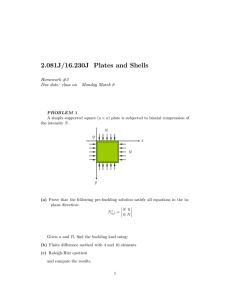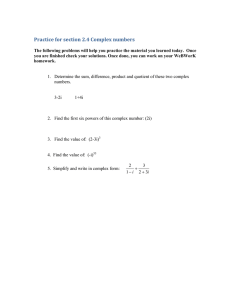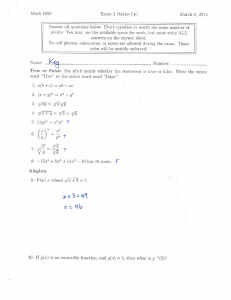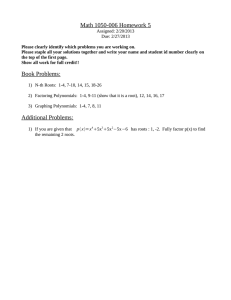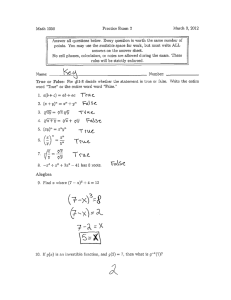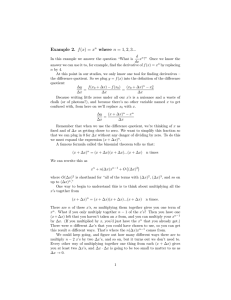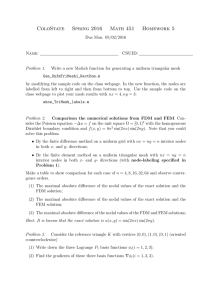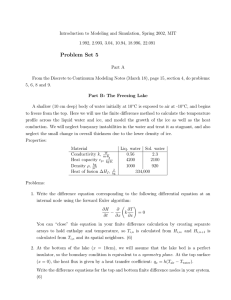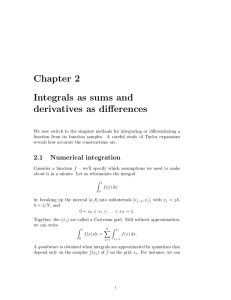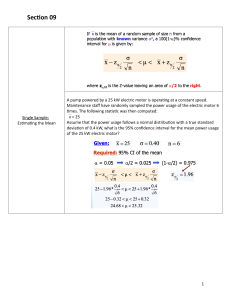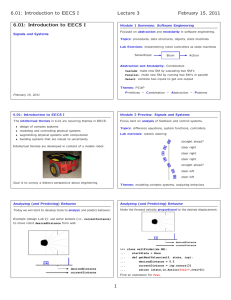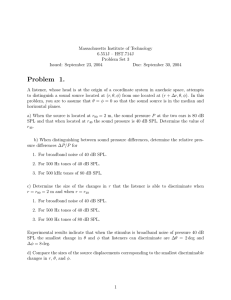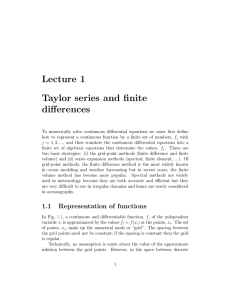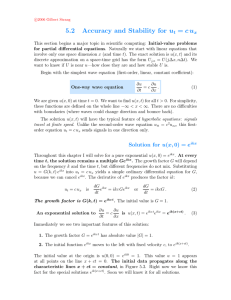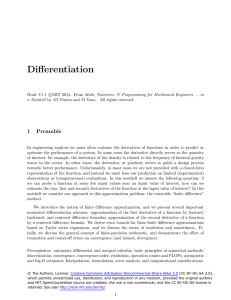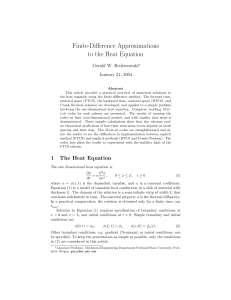Section 2.2: Intro. to Function Vocab. function: one-to-one function:
advertisement
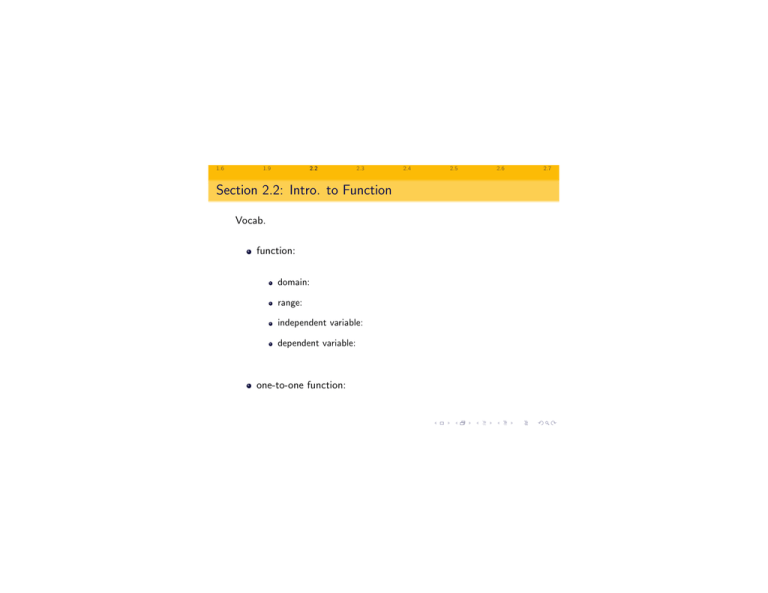
1.6
1.9
2.2
2.3
Section 2.2: Intro. to Function
Vocab.
function:
domain:
range:
independent variable:
dependent variable:
one-to-one function:
2.4
2.5
2.6
2.7
1.6
1.9
2.2
2.3
2.4
2.5
2.6
Q: How does the vertical line test relate to the definition of
a function?
Q: Is there a similar way to check if a function is 1-1?
Ex. 1: Graphical Representation
(Is it a fn.? Is it 1-1? What is the domain? What is the range?)
(a)
(b)
2.7
1.6
1.9
2.2
2.3
2.4
2.5
2.6
Ex. 1 cont.
(Is it a fn.? Is it 1-1? What is the domain? What is the range?)
(c)
(d) Given sets X = {1, 2, 3, 4, 5}
and Y = {−1, 0, 2, 3}.
f (1) = −1, f (2) = 0, f (3) = −1,
f (4) = 0, and f (5) = 3
Is f : X → Y ? Is it 1-1?
2.7
1.6
1.9
2.2
2.3
2.4
2.5
2.6
Ex. 2 Algebraic Representation
Find mathematical fn., and state (implied) domain.
”For each number x in the domain, the corresponding range value
y is found by adding one to the domain value and then dividing
that result into five added to five times the domain value.”
2.7
1.6
1.9
2.2
2.3
2.4
2.5
2.6
Typical Types of Functions
Polynomial (of degree n):
f (x) = an x n + an−1 x n−1 + ... + a1 x + a0
Linear (n = 1):
f (x) = ax + b with a �= 0
Quadratic (n = 2):
f (x) = ax 2 + bx + c with a �= 0
Cubic (n = 3):
f (x) = ax 3 + bx 3 + cx + d with a �= 0
p(x)
Rational: f (x) = d(x)
, with x such that d(x) �= 0 and p(x)
and d(x) are polynomials
2.7
1.6
1.9
2.2
2.3
2.4
2.5
Types of Functions cont.
Power fn.: f (x) = x r
integral powers: r �Z+
reciprocal powers: r �Z−
roots: r = mn where m�Z+ , n�Z+ and n �= 0
√
√
f (x) = n x m = ( n x)m
Exponential: f (x) = b x , where b > 0
Logarithmic: f (x) = logb x where b > 0
Trigonometric: examples f (x) = sinx and g (x) = secx
2.6
2.7
1.6
1.9
2.2
2.3
Typical Domain Restrictions
Fractions
Roots
odd roots:
even roots:
2.4
2.5
2.6
2.7
1.6
1.9
2.2
2.3
2.4
Ex. 3
Let f (x) = 3x + 2 and g (x) = 2x 2 − 1.
Find
(a) f (1)
√
(b) g ( 3)
(c) f (t 2 − 3t) − g (t + 2)
2.5
2.6
2.7
1.6
1.9
2.2
2.3
Definition (Difference Quotient)
For a given function, f (x),
f (x+h)−f (x)
h
Geometrically -
2.4
2.5
2.6
2.7
1.6
1.9
2.2
2.3
2.4
Ex. 4
Let f (x) = 3x + 2 and g (x) = 2x 2 − 1.
(a) Find the difference quotient of f (x).
(b) Find the difference quotient of g (x).
2.5
2.6
2.7
1.6
1.9
2.2
2.3
Ex. 5: True or False? Explain.
(a) f (x − 1) = f (x) − 1
(b) f (x + h) = f (x) + h
(c)
f (x+h)
f (x)
=h
(d) f (3x) = 3f (x)
2.4
2.5
2.6
2.7
1.6
1.9
2.2
2.3
Ex. 6:
Let R(x) = 3x 2 + 3x −2 − x − x −1 .
Show R( x1 ) = R(x).
2.4
2.5
2.6
2.7
